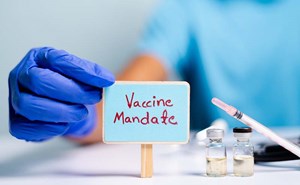Earlier this week, the Trump Administration released its budget request for fiscal year (FY) 2021. Each year, the president issues the President’s Budget, which lays out his administration’s vision and priorities for the next FY and beyond. Since the legislative proposals and budget requests included in the President’s Budget all require congressional approval they are viewed more as aspirational than realistic. (On a personal note, I worked on eight presidential budgets in my previous role at the Department of Health and Human Services (HHS), so this process always holds a special place in my heart.)
In the FY 2021 Budget request, the President includes numerous proposals that will likely never be enacted, including significant reductions to “discretionary” federal spending that is subject to the annual Congressional appropriations process. The administration wants to slash HHS’ discretionary budget—which includes funding for the National Institutes of Health (NIH) and the Centers for Disease Control and Prevention (CDC)—by over $9 billion or nearly 10 percent. The Budget also proposes significant reductions to Medicare and Medicaid. With respect to Medicare, the Budget lays out a series of proposals that, if enacted, are projected to save Medicare appropriately $756 billion over 10 years—and push back the date that the Medicare Trust Fund is expected to go bankrupt by over 25 years. Of interest, one of the proposals would level payments for hospital outpatient departments and physician offices for the same services—removing the exemption to this “site-neutral” payment policy that currently applies to emergency departments.
Proposed cuts to Medicaid are equally severe. The Budget includes numerous proposals aimed at slowing down the rate of growth of Medicaid spending, reducing “fraud, waste, and abuse,” and encouraging the use of work requirements. These proposals—which would cut Medicaid spending by nearly $1 trillion over 10 years—are on top of the recently announced Medicaid block grant initiative that would cap federal funding for a segment of a state’s adult Medicaid population. Further, the President’s Budget includes a proposal that would increase the limit on Medicaid copayments for “non-emergency use” of emergency departments—a policy that ACEP strongly opposes. We have continually tried to show the Centers for Medicare & Medicaid Services (CMS) that there are much better approaches to reducing Medicaid spending than increasing copays for those who can least afford it—especially by implementing ACEP’s alternative payment model, the Acute Unscheduled Care Model (AUCM).
The Budget does include strategic investments in addition to cuts. By providing $2.6 billion to the Assistant Secretary for Preparedness and Response (ASPR)—the lead federal agency at HHS for public health emergency preparedness and response—the Administration aims to:
- “Promote nationwide healthcare system readiness and response;
- Deploy emergency resources and medical personnel; and,
- Develop and manufacture vaccines, drugs, diagnostics, and technologies to protect Americans from the impact of natural disasters, bioterrorism, and emerging infectious diseases including pandemic influenza.”
There are numerous other proposed initiatives in the Budget, but the last one I want to flag for you is the administration’s overall vision for health reform that would “protect the most vulnerable, especially those with pre-existing conditions, and provide the affordability, choice, and control Americans want, and the high-quality care that all Americans deserve.” Interestingly, the proposal does not address how the administration would repeal and replace the Affordable Care Act—a major priority for President Trump.
While the Budget as written is a non-starter in Congress, it is still important to pay attention to what’s in it. The Budget is a great indicator of what initiatives and priorities the administration feels strongly about and how the President would ideally like to tackle the major health care and other domestic and global challenges we are facing today. Further, members of Congress do look at legislative proposals that make their way into the President’s Budget year after year—and sometimes they do decide to adopt one. Beyond that, it makes for an extremely interesting read for policy wonks like me.
Until next week, this is Jeffrey saying, enjoy reading regs with your eggs!






